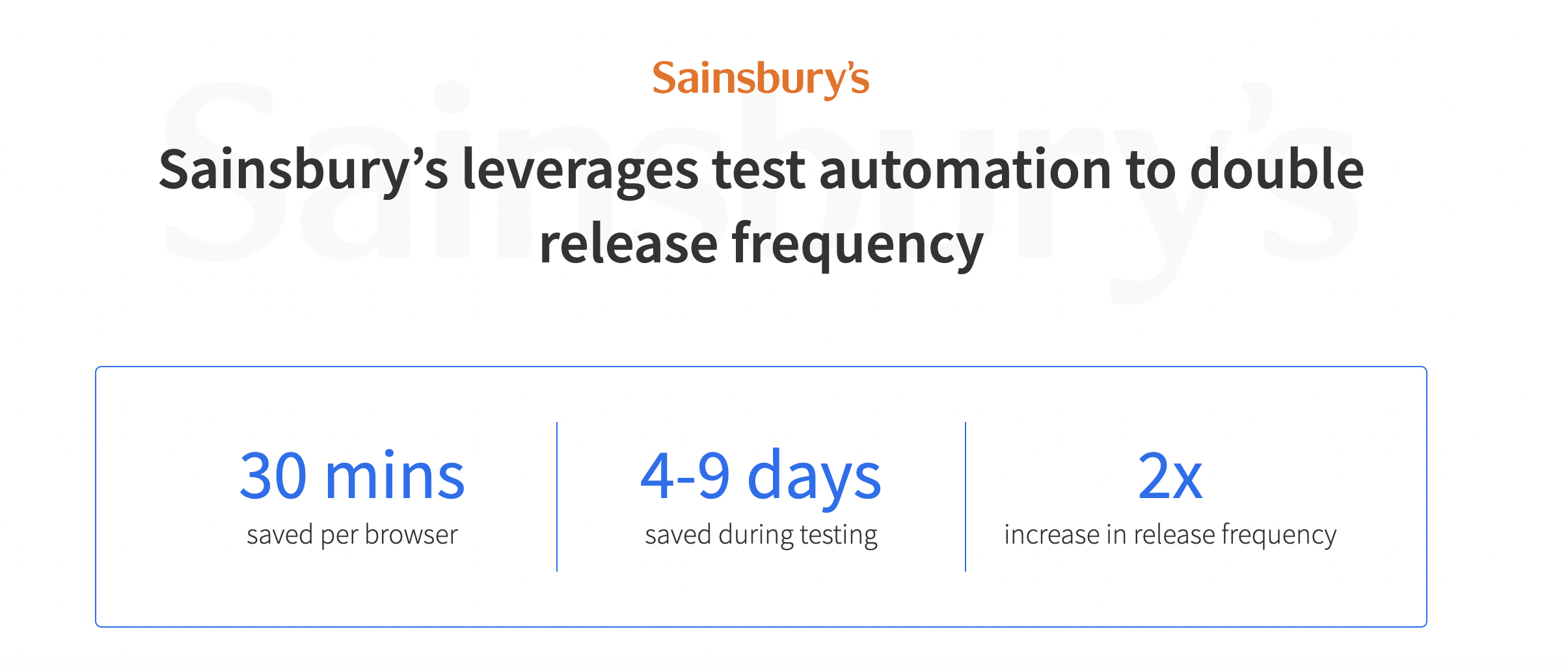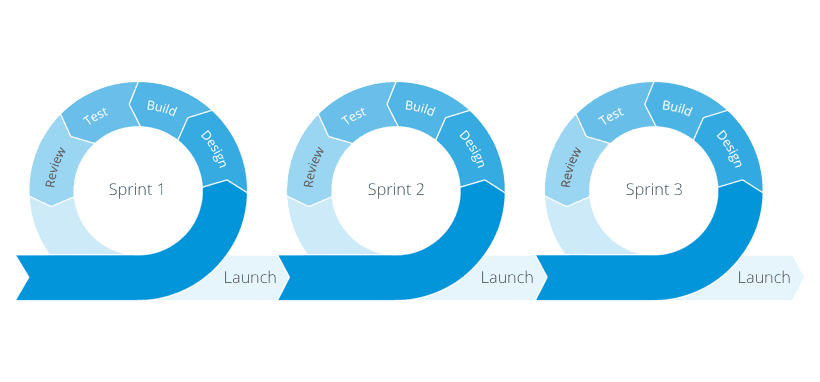QA challenges in Agile arise due to rapid iterations, evolving requirements, and limited sprint timelines. Testers must adapt quickly, balance speed with quality, and overcome gaps in skills, documentation, and infrastructure to ensure reliable releases.
Overview
Key Principles of Agile Testing Every QA Should Know
- Continuous feedback loops
- Strong focus on customer value
- Collaboration between devs, QAs & stakeholders
- Simplified, efficient testing practices
- Adaptability to change & continuous improvement
What are the 11 Top QA Challenges in Agile?
- Changing Requirements – Mitigate with risk-based testing + automation for regression.
- Inadequate Test Coverage – Track coverage via Agile metrics.
- Slow Feedback Loop – Use cloud device farms to reduce wait time.
- Late Defect Detection – Apply static code analysis early.
- Skipping Essential Tests – Update test plans post-sprint; prioritize non-functional tests.
- Performance Bottlenecks – Use load & automated performance testing tools.
- Tester Skill Gaps – Upskill team or use low-code/no-code tools.
- QA Wait Time – Leverage automation to accelerate checks.
- Frequent Code Breakage – Run automated regression tests per build.
- Minimal Documentation – Maintain lightweight, ad-hoc but essential documentation.
- Browser/Device Variations – Test across real browsers & devices for consistency.
This article explains what Agile testing is, its guiding principles, the 11 most common QA challenges faced in Agile projects, and practical solutions to overcome them using automation, real device testing, and better team collaboration.
What is Agile Testing?
Agile Testing is one of the most important components of the Agile Software Development Process.
In conventional software development methodologies, testing is generally done after the development stage of the software is finished.
However, in Agile Methodology, testing is continually carried out along with the development. Agile Testing imparts continuous feedback to the development phase.
Agile Testing can commence at any stage of the development process (even at the start). This methodology is a continuous method, unlike the Waterfall Method, which is sequential.
A recent report shows that the adoption of Agile methodologies has increased from 37% in 2020 to 86% in 2021 among software developers.
Key Attributes of Agile Testing
Below is a list of key attributes or principles of Agile testing methodology:
- Providing continuous feedback to the developers: In Agile methodology, testers are not only responsible for testing but also for providing feedback to the developers to facilitate the development of better products.
- Rendering value to the consumer: It is one of the most important characteristics of Agile testing. The primary goal of every task carried out by an Agile tester is to build a robust and useful product for the consumer.
- Promote constant communication: Agile methodology aims to reduce errors and miscommunications by setting up an efficient communication channel with all the stakeholders of the development project.
- Provide constant feedback: Being the creators of a product, it is natural for developers to be a bit defensive about their work. However, Agile testers need to constantly provide critical feedback to the developers if necessary. After all, the end goal is to render value to the consumer.
- Simplistic approach: In Agile testing, testers are recommended to perform only the necessary tests. Keeping this in mind, Agile testers are not to leave behind any essential tests. This approach aims to render a product that is simple but provides value. This approach believes that maximizing the amount of work doesn’t necessarily bring value.
- Practicing continuous improvement: Agile testers try to learn how to perform their activities with much more efficiency continuously. They depend mainly on feedback and self-learning for improvement.
- Respond to changes: As mentioned in the introduction, Agile methodology has the ability to respond to changes. Agile testers are highly adaptable to changes. They are efficient in following the feedback from consumers and improving the product accordingly.
- Self-organized: Agile testers are highly efficient in organizations and communication. They tend to solve problems by bringing teams together to resolve them.
- People-oriented: Agile methodology is known to be focused on people, i.e., it recommends human interaction rather than technological interaction. Agile testers are highly collaborative in nature which empowers them to deliver value to their consumers.
- Enjoying work: Finally, the Agile methodology recommends testers enjoy their work. Agile testers will be able to deliver a product with the greatest value to the consumer only if they are enjoying their work.
Also Read: Continuous Integration with Agile
Common Challenges Faced in Agile Methodology and How to Overcome Them
Here is a list of some common challenges faced in Agile methodology and some tips on how to overcome those challenges:
1. Changing Requirements
Sometimes, there are changes in the requirements or specifications of a product. Generally, these changes are taken care of, but if these changes occur near the end of a sprint, these changes are moved to the next sprint, and they become an overhead for the developers and testers. The testing team should factor in risk analysis and perform testing for the most important functionalities first. Automation can also help in performing regression tests to verify if other parts of code are affected.
Must-Read: What is Risk-Based Testing in Agile?
2. Inadequate Test Coverage
Continuous Integration (CI) and ever-changing requirements are a common part of Agile testing. Sometimes, Agile testers miss out on critical test cases because of the changing requirements and continuous integration. This can be solved by analyzing Agile metrics to keep track of test coverage. Check out How to ensure maximum test coverage?
3. Slow Feedback Loop
Sometimes, the feedback loop between the tester and developer is comparatively slow during Agile testing. This may be due to shorter time in sprints or continuous shipments of new code, which is followed by continuous testing. Sometimes the feedback loop gets extremely slow because of the device wait time. This is an issue that most companies that maintain an in-house device library face. Testers A, B, and C might require the same device to test at the same time. If Tester A has the device, then Tester B and C have to wait until they get access to the device.
BrowserStack offers a Real Device Cloud, that has over 3000+ browsers and devices. This allows multiple testers to access the same device at a given time. Sign up for a free account and try it for yourselves.
4. Early Detection of Defects
Defects are generally more difficult and expensive to resolve at a later stage of the development process. Sometimes, in Agile testing, defects are detected at the testing stage or even at the production stage, which gets very difficult to fix. This challenge can be overcome by running a static analysis tool on the source code which will help you to spot errors, coding derivations, datatype mismatch, etc.
5. Deferring or Skipping Essential Tests
Agile testing methodology recommends completing a fixed amount of work in a small amount of time, which are known as sprints. Since these sprints are a short amount of time, Agile testers put some of the non-functional tests on hold, like API testing, compatibility testing, cross browser testing, etc, due to time constraints and the complexity of the test cases. This may cause bugs that might be difficult to debug later. To fix this, the testing plan should be updated after every sprint to keep track of all the essential tests.
You can use BrowserStack to test your devices instantly across 3000+ real devices and browsers. Agile testers can seamlessly perform cross browser compatibility tests and reduce their testing time by multiple folds.

6. Performance Bottlenecks
In recent times, the applications we use are much more complex and robust. This involves developers writing lots of codes during the development stage. Sometimes, this causes performance issues for the product. This generally happens when the developers build a product without understanding the end-user requirement and just following the specification requirement. Implementing load testing tools can help in identifying and fixing performance issues. Using automated tools can also help in identifying performance bottlenecks.
7. Tester’s Availability
Sometimes, the testers don’t possess the relevant skills to perform API testing or Integration testing. This might result in skipping some important tests. You can either choose testing software that does not require coding for testers or you can train the testing team to carry out all the essential tests effectively.
8. QA Wait Time
All the new shipments of codes must be checked by the QA team before implementation, which might take some time. In Agile testing’s short sprints, either the QA teams are left with less time for verification or implementation time is cut short. To minimize QA time, you can implement automation to aid the QA team in fastening their process.
9. Frequent Breakage in Code
Codes are written, edited, and regularly compiled by the developers. This builds up the likelihood of breakage in a code during or after the build. This results in tampering with the existing features of a product. To tackle this problem, you need to run a set of tests for every build. This might be difficult if there are a limited number of testers. Automated testing is very beneficial here since it enables us to run tests against each build. BrowserStack’s Automate permits Selenium testing at scale.
10. Less Documentation
It is believed that in Agile Testing, documentation is done at a minimal level which makes the task of the QA team more tedious. However, it is a myth about Agile testing that it promotes minimal documentation. Documentation is carried out on an ad-hoc basis in Agile testing.
Read More: Debunking Myths about Agile Testing
11. Different Browsers/Devices
The UI and other functionalities of an application can be viewed differently in different applications and browsers. Testers must ensure that the UI and other functionalities are viewed as expected across all browsers and devices. BrowserStack’s Live supports interactive testing on multiple browsers and devices.
You can overcome these Agile challenges by testing on BrowserStack’s Live, Automate, and Percy platforms. You can achieve ease in automation, testing in cross-browser and cross devices, and efficient visual testing for your website. If you are testing a mobile application, you can try out App Automate and App Live.
As traditional software development methods like Waterfall, V-models, etc., are turning obsolete, an increasing number of organizations are adopting the Agile methodology of software development. Agile Testing is a part of Agile software development. Though Agile methodology is very well known, it has some challenges which need to be overcome. Some of the common challenges faced in the Agile methodology include Inadequate test coverage, Slow feedback look, deferring important tests, etc. BrowserStack offers a suite of products that can help your team achieve its Agile goals.








